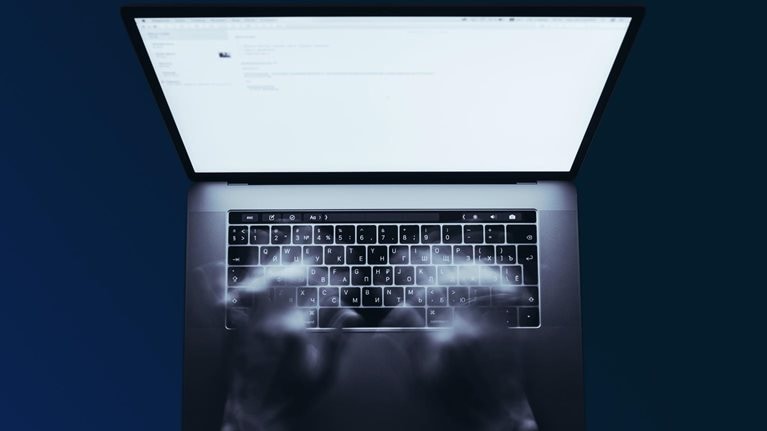Speed has been a fundamental characteristic of the COVID-19 pandemic—the virus hit fast, sending much of the world into lockdown just months after it was first detected. Businesses reacted rapidly, reorganizing supply chains, adopting remote-work models, and speeding up decision making with surprising velocity. Vaccines were created with unprecedented swiftness. And as with prior crises, the organizations that acted quickly to counter the COVID-19 downturn dealt with the disruption better than the organizations that reacted more slowly.
The need for sustainable speed
Speed is also likely to be a central feature of what happens next—with one important difference. Over the past year, adrenaline unlocked speed. In the near future, speed will need to arrive by design.
For companies to achieve long-term resilience, it is imperative for them to ensure that the speed they successfully unlocked during the pandemic remains sustainable in the future. To do this, organizations will need to take into account not only potential strains on capacity but also the mental health of their workforce and the burnout often experienced by employees. To prepare, businesses need to ask and answer the following five questions.
1. What kind of demand shift should we expect, and how do we get ready for it?
Both business-to-consumer (B2C) and business-to-business (B2B) companies expect to see meaningful shifts in the shape of future demand. This will affect their commercial model.
During the COVID-19 pandemic, many households prioritized buying goods (especially basic products such as groceries) over services (such as restaurants and hair salons, many of which were closed anyway). As a result, pent-up demand could lead to a spike in spending on services as and when normalcy returns. What is still unclear is which services will return and in what form. For example, consumers have been spending more on home-based products, such as streaming and meal delivery. Will those preferences stick, or will consumers revert to their prepandemic habits? Or something in between? How quickly will travel and related services recover, and what will consumers expect from these experiences?
The consumer demand recovery and lasting effects of COVID 19 on prospects for consumer demand found that online grocery shopping, virtual healthcare visits, and home nesting were likely to stick. On the other hand, people would likely return to prepandemic patterns, or close to them, when it came to leisure air travel, live entertainment, and education. As for those consumer-products companies and retailers whose sales have risen during the pandemic, they will need to keep up with changing consumer demand to avoid a slump. Approaches to doing this vary but include promotions, more detailed segmentation, better customer experiences, and enhanced product availability.
During the pandemic, many companies have been able to develop a deeper understanding of customer behavior. Real-time and detailed consumer segmentation can replace broad-brush, less accurate survey-based understanding. These data can not only be used to make better, more specific longer-term bets on how demand for a particular product or service may evolve but can also open up a world of new possibilities on how businesses can adapt at the speed of culture. Marketing campaigns will likely need to be conceived, launched, and adjusted much faster than was the norm even a couple of years ago.
Many B2B companies value the traditional sales model, and that new-relationship formation will continue to occur in person. There is research that supports the view that developing trust with B2B customers is tougher in entirely remote environments. However, there is also compelling evidence that B2B buyers prefer the convenience of online, or even automated sales, once trust has been established. An effective way to continue the relationship, then, is to ensure access to convenient online sales channels to drive speed and convenience for a new generation of B2B purchasers.
2. How do we incorporate new ways of working to enhance productivity and health?
Over the past year, organizations have become well versed in the basics of ensuring a safe working environment. More recently, however, companies have reported that some of their workers appear to be more willing to participate in higher-risk activities simply because they are tired of living with virus restrictions. This will require a different type of intervention and messaging, especially because newer COVID-19 variants pose a high risk and may be transmitted in ways that are not yet fully understood. Employers have a unique societal role to play in vaccination; they are important voices and can help reduce the friction associated with getting the vaccine.
Self-reported data from a wide range of organizations point to individual and team productivity being higher than before the onset of the pandemic, but not uniformly so. According to a McKinsey survey, productivity is up for about half of all workers, with the other half reporting no change or lower productivity. The same survey suggested that, while the inability to disconnect is a real concern, increased productivity is correlated to a willingness to change how people work. For instance, 67 percent of the organizations that reported higher productivity also reported a significant increase in work getting done through multiple, quick meetings, typically lasting less than 15 minutes or resolved through an exchange of text messages. Evidence is also emerging that appears to show a correlation between an employee’s sense of belonging and higher productivity. An unpublished McKinsey survey of employees found that companies that managed to build inclusiveness into the remote-work arrangements that resulted from the COVID-19 pandemic were significantly more likely to see increased productivity.
The shift to virtual work has also resulted in a wealth of new data about how work is done. Meetings are more likely to take place via videoconferencing. Communication is more likely to occur through electronic channels or remote-meeting applications. Such data, interpreted correctly, can pinpoint opportunities for skill building at a higher frequency and specificity. For example, the chief human-resources office of a leading consumer-products company is rewriting her job description because she believes the role will need to evolve into one in which data science and interpretation take on greater prominence. This kind of role adaptation, as well as the ability to construct, schedule, and deliver remote courses with far greater ease and efficiency than in-person training, means that the promise of specific, real-time upskilling is closer than before.
In some cases, companies are using this moment to strengthen their speed muscles, while also increasing the emphasis on building personal connections and reducing fatigue. Work can and should look different to create competitive advantage in performance and health.
3. How do we get the most value out of office real estate?
When the COVID-19 pandemic hit, many workers abruptly began to work from home. At first, the thinking was that productivity and job satisfaction would plummet. In fact, while some people struggled with the transition, for others, the new arrangement showed how much flexibility one can have in how—and where—to work. As a result, the workplace will never be the same.
At the same time, however, the level of remote-work adoption that has occurred in the context of COVID-19 is unlikely to persist into the future. We believe that the future for knowledge-based companies will be hybrid. Bringing people together in person can enhance collaboration, ensure alignment, and foster community. Companies will need to decide when to require a physical presence, and how often such in-person meetings should take place.
This is not a simple undertaking. The moments that matter vary by roles and processes. Organizations need to accept that they may not get it right the first time and should treat this as a continuous experiment in which they regularly measure productivity, collaboration, innovation, and community. In short, companies need to understand both what is working (and scale it) and what is not working (and change it).
Organizations need to accelerate building a real capability around the right way to do hybrid work, especially as more work returns to the workplace. This process is unlikely to stop even when functional herd immunity is achieved. Implemented correctly, the hybrid-working model brings a real competitive advantage because employees will have the flexibility that enables them to be more productive while still feeling that they belong to an energizing community.
Leaders will need to make decisions about office real estate, namely: What kind of office footprint will the organization have (how much space is needed) and what will the working experience be like inside—and outside—that footprint (how will people work)? Footprint needs depend on the average size of the group required to foster meaningful interactions. For instance, if the vast majority of a company’s interactions are in smaller groups or teams, it can consider shifting offices to a greater number of small locations, rather than being anchored to a few large hubs.
When it comes to the experience, businesses will need to create a seamless model that makes it possible to work from anywhere—whether from a company office, home, coworking stations, or other venues. They will also need to adapt their physical spaces to focus on social and collaborative interactions rather than on providing spaces for individual work. As the post-COVID-19 era evolves, workers may expect companies to provide a more appealing office experience, which may require new thinking on digital experiences, amenities, and other aspects of working life. Organizations will need to analyze how they use space and how to repurpose the space they have to get the most value. They may also want to push for more flexible leases; ideally, landlords will become solution providers that work with companies as they reimagine their space.
Finally, in the coming weeks and months, companies will need to get relentlessly practical about the return to work, going far beyond platitudes about hybrid work and flexibility. They will need to define clear guidelines, for instance, about when they expect people to show up in person for the moments that matter. They will need to define which decisions will be taken by top managers, and what latitude team managers will have to decide the extent of their in-person work. Site-based pilots, where practicalities such as meeting-room bookings, cross-silo team collaboration, and space requirements, will be critical to minimizing friction as people start to return in larger numbers.
4. How can we reimagine capital allocation to promote resilience?
Capital allocation used to be primarily about making large bets early, based on a distinctive knowledge of trends that could take years to play out. During 2020, a year of extreme uncertainty, it became clear that this view needs to be complemented by a new way of thinking. Specifically, companies need to develop a capital-allocation process that allows them to create value by navigating fast-moving disruptions that can manifest themselves over days or weeks, as opposed to years.
In 2018, McKinsey analyzed the performance of 1,100 companies during the 2008–09 recession and identified those that did especially well (“the resilients”). The resilients did not lead their sectors in any special way before the recession occurred, but they moved faster than their peers to maintain earnings before interest, taxes, depreciation, and amortization (EBITDA) at slightly higher levels by the time of the trough, an advantage they then sustained. Indeed, they grew EBITDA quarter after quarter, allowing them to invest more than their peers and create significantly greater value. Ten years after the recession, 75 percent of the resilients were still outperformers. The conclusion: their performance during the disruption helped them create a competitive advantage that was very tough for others to claw back when growth resumed.
In 2020, McKinsey repeated this analysis with more than 1,500 companies, and the findings were similar: a small group of companies were successfully navigating the pandemic-related business disruption to create value. Interestingly, the research found that the companies that managed to invest their capital in a balanced way—across growth, margin, and optionality—did better than those that focused only on a single dimension, such as growth or cost cutting.
Navigating business disruption deftly is easier said than done. One critical capability is “trigger-based capital allocation.” This involves defining a set of big moves, such as M&A, portfolio reallocation, or divestitures, that could significantly alter the shape of the business. Then, the company defines specific conditions, or triggers, under which it would take the proposed action. Finally, the company needs to have a clear mechanism for identifying whether these conditions have occurred—and it has to be able to move quickly when they do. To make trigger-based allocation work, top leaders need to agree on the goals related to capital allocation, and they need to set up a monitoring mechanism so that they are ready to act.
5. What broader role should organizations play in their communities?
The COVID-19 pandemic has been a global humanitarian challenge. It is right, then, that companies take stock and consider their responsibilities—not only to their shareholders but also to their employees and the societies where they operate.
In the United States, for example, COVID-19 has disproportionately affected women, minorities, people of color, lower-income workers, and small businesses. Students have also been widely hurt, as schools and colleges largely shifted to remote learning.
Businesses have a role to play in rebuilding robust economies and in improving their communities. As a part of their corporate social-responsibility efforts, companies should consider which areas to prioritize, based on the strengths of their organization and on what their people value most. Efforts can be small, such as ordering takeout from local restaurants to help support small businesses. They can be in the form of services, such as counseling small-business owners on how to adapt in the COVID-19 era. They can be more systematic, such as directing job creation and recruitment to those in hard-hit cohorts, or investing in training to equip new graduates to find jobs or help vulnerable workers gain new skills so they can evolve in their current role or change careers. In any case, leadership needs to take an active role.
In June 2020, McKinsey asserted, “An organization designed for speed will see powerful outcomes, including greater customer responsiveness, enhanced capabilities, and better performance in terms of cost efficiency, revenues, and return on capital. The speedy company might also find it has a higher sense of purpose and improved organizational health. These outcomes are possible, but not inevitable.”
Nine months later, we think that this analysis is as sound as ever. Speed matters, but not at the cost of making mistakes or burning out. By asking the right questions, business leaders can improve the odds of negotiating the next normal successfully, and in so doing, help themselves, their employees, and their communities.





